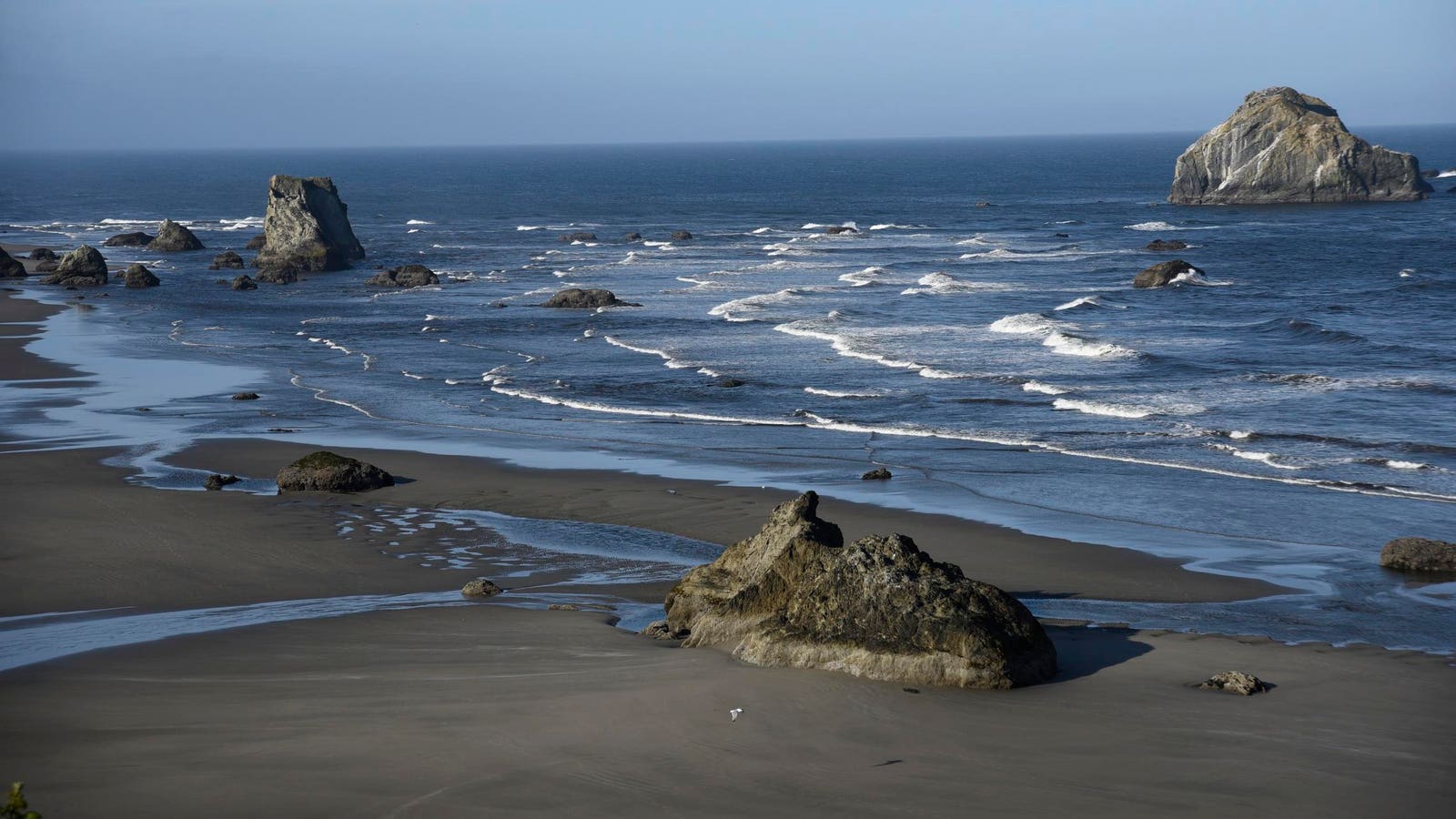Topline
The Axial Seamount, an underwater volcano located off the Pacific Northwest coast that last erupted in 2015 and spewed several miles of lava along the seafloor, could be preparing to erupt soon, according to scientists observing seismic activity in the area.
FILE PHOTO: The Axial Seamount underwater volcano is located 300 miles off the coast of Oregon but … More its potential eruption later this year has scientists very interested.
Key Facts
The underwater volcano is located 300 miles off the coast of Oregon and at a depth of nearly 5,000 feet below the surface of the Pacific Ocean.
Scientists at the University of Washington described the Axial Seamount as both one of the most active volcanoes in the Pacific Northwest and one of its least famous, adding they believe it’s gearing up to erupt for the first time since 2015.
While scientists don’t have an exact timeline for when it could erupt, they believe it will happen before the end of 2025.
The scientists say they have observed two factors—inflation of the volcano due to magma buildup, and frequent undersea earthquakes in the area—that suggest an eruption may be imminent.
Get Forbes Breaking News Text Alerts: We’re launching text message alerts so you’ll always know the biggest stories shaping the day’s headlines. Text “Alerts” to (201) 335-0739 or sign up here.
How Will The Axial Seamount’s Eruption Impact Residents Along The Pacific Northwest Coast?
Scientists say the eruption does not pose any danger to people living along the Pacific Northwest coast. According to the University of Washington, the Axial Seamount is “too deep and far from shore for people on land to even notice when it erupts.” The underwater volcano is not tied to any seismic activity on land, and so the residents of the Pacific Northwest coast will not have to worry about this event triggering “a major earthquake or tsunami.”
Why Are Scientists Excited About This Possible Eruption?
The underwater volcano’s relative predictability is what makes it exciting for scientists. According to Oregon State University, the Axial Seamount is the most active submarine volcano in the region, with the most recent eruptions taking place in 1998, 2011 and 2015. Bill Chadwick, a research associate from the university, notes that it is also “probably the best monitored submarine volcano in the world.” The volcano was the site of the world’s first underwater volcano observatory called NeMO (New Millennium Observatory) and is now monitored by the Ocean Observatories Initiative’s 300-mile Regional Cabled Array. The frequency of eruptions, the apparent “repetitive behavior” between eruptions and extensive monitoring at the site make it an “ideal place to study how volcanoes work,” according to the U.S. Group on Earth Observations (USGEO). Close observation of the Axial Seamount has revealed that it inflates roughly the same amount before each eruption, allowing forecasts to be made months in advance. According to USGEO, this research could help understand and better predict other volcanic eruptions and hazards in the future, regardless of their location.
What About The ‘big One’?
The Axial Seamount is located quite a distance away from the Cascadia Subduction Zone megathrust fault. A megathrust fault occurs when one large continental plate is forced under another one. Scientists have been closely observing the Cascadia Subduction Zone, which has long been feared as the site of the so-called “Big One”—a major and destructive seismic event along the U.S. West Coast. In a study published last week in the Proceedings of the National Academy of Sciences, scientists warned there is a 15% chance of an earthquake greater than 8.0 magnitude along this fault in the next 50 years. Unlike the Axial Seamount eruption, such a quake could lead to major devastation and cause land along the Pacific coast to sink by more than six feet. According to NBC News, a 2022 federal and state planning exercise preparing for such a disaster along the Cascadia Subduction Zone estimated that the ‘Big One’ could cause as many as 14,000 deaths, more than 100,000 injuries and destroy around 620,000 buildings in the region.
What Do The Latest Forecasts Say?
In their most recent update late last month, researchers from the University of Oregon said the Axial appears to be “just ‘treading water’ lately.” The inflation of the volcano is “marching along at a fairly steady clip”, but the number of daily earthquakes in the underwater region has fallen from over 1000 a day in March to a few hundreds per day in April.
What Do We Know About The Axial Seamount’s Location?
A key difference between the Axial Seamount and other volcanoes is that it is formed by a “hotspot.” A hotspot is a region of the Earth’s mantle where plumes of hot material rise up into the crust. As the crust in these areas moves over the hotspot, it can lead to the formation of a chain of volcanoes.
What Is The Pacific Ocean Ring Of Fire?
The Axial Seamount lies in an area known as the Pacific Ocean’s ‘Ring of Fire’ which is the most volcanically and seismically active region in the world. Around 90% of the world’s earthquakes occur in this region. Since 1960, 69% of all the world’s volcanic eruptions have occurred here as well.
Further Reading
The Pacific Northwest’s most active underwater volcano is getting ready to erupt (University of Washington)
One Of the Most Active Volcanoes In the World Is About to Blow (Popular Mechanics)










